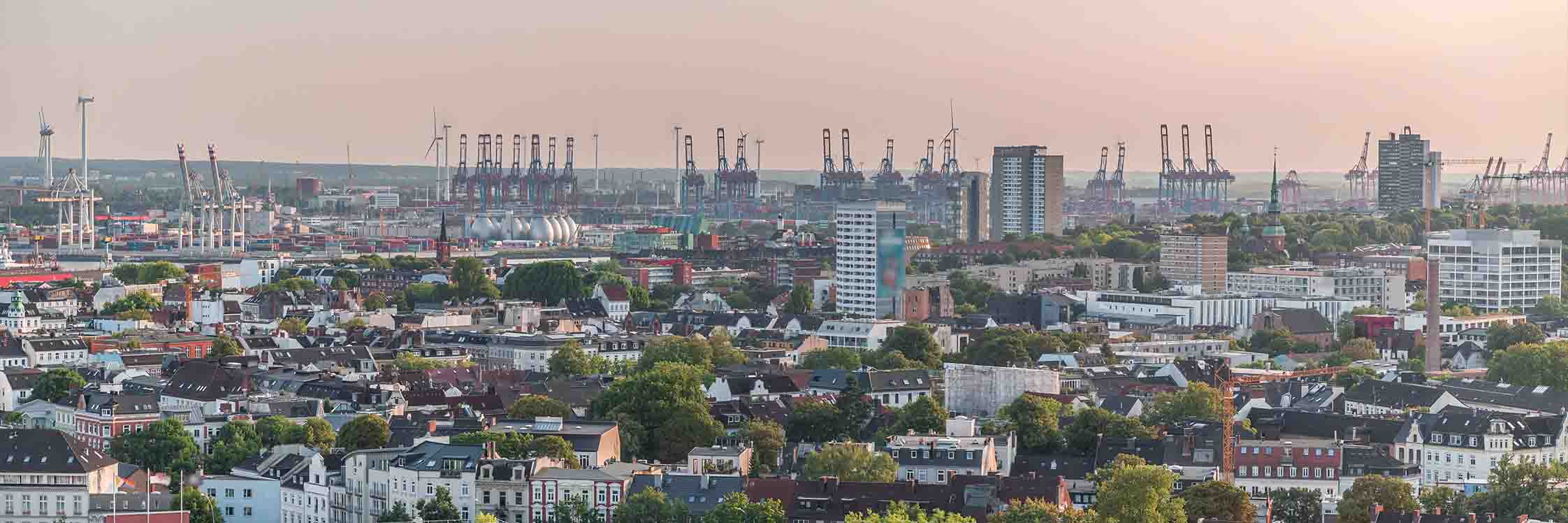The aerospace industry’s flight path to recovery
With aircraft production rebounding and demand for maintenance surging, both original equipment and aftermarket aerospace companies are gaining altitude, says Fidelity’s Clayton Pfannenstiel.
- Commercial aerospace is poised for a new era of growth and opportunity, according to Fidelity Portfolio Manager Clayton Pfannenstiel, who feels that original equipment and aftermarket firms are well-positioned amid renewed aircraft production and heightened demand for maintenance services.
- “Like a twin-engine aircraft, these two industry segments are throttling up to lift the aerospace business, poised to ascend amid a global rebound in travel and airlines adapting to evolving fleet demands,” says Pfannenstiel, who co-manages Fidelity Advisor® Industrials Fund with David Wagner.
- In helming the sector-focused fund, Pfannenstiel invests when he believes a stock’s price becomes disconnected from the company’s intrinsic (fair) value, a dynamic that often occurs at cyclical extremes because of market overreaction. As he sees it, this can present opportunities for disciplined investors with a time horizon that spans a full business cycle.
- Among original equipment stocks within the portfolio as of September 30, Pfannenstiel notes that Boeing and Howmet have mounted a resurgence by overcoming pandemic-era turbulence, notably production disruption and halts. Meanwhile, on the aftermarket side, GE Aerospace is thriving as airlines extend the lifespan of aging fleets.
- “Boeing, long scrutinized for its manufacturing challenges, now appears to be stabilizing under new leadership,” says Pfannenstiel. “CEO Kelly Ortberg’s strategic capital raise in late 2024 and steady progress toward improved production rates have restored confidence in the company’s trajectory.”
- He adds that with a backlog stretching well into the 2030s, Boeing’s cash-flow outlook is increasingly robust, a promising sign for investors.
- Meanwhile, Howmet, a critical original equipment supplier, is positioned for growth as widebody aircraft production ramps up to meet rising demand for international travel.
- These aircraft – essential for long-haul routes – are in short supply, and Howmet’s components have gained prominence,” notes Pfannenstiel. “In fact, our analysis suggests that the firm’s content is three times more prevalent in widebody models than in narrowbody aircraft, further validating the firm’s upside potential and making it a key player in the original-equipment recovery story.”
- On the other hand, he highlights that aftermarket commercial aerospace businesses have experienced an elongated growth phase as carriers, forced to extend the life of their fleets due to the pandemic, are now operating aircraft with an average age of 12.8 years, up from 10.7 in 2017.
- With roughly 80% of these planes out of warranty, a surge in demand for maintenance services has been created,” Pfannenstiel says.
- He adds that this backdrop supports GE Aerospace, a recognized leader in the aftermarket space, valued for its expertise in maintenance and repair services. In his view, the company is well-positioned amid sustained airline spending in the years ahead, as carriers prioritize operational efficiency and safety.
- Despite recent aggressive projections for new aircraft production, the supply shortage suggests the aerospace industry’s recovery is not a single-engine effort, but rather a dual-engine growth story powered by sustained strength in both the original equipment and aftermarket segments,” concludes Pfannenstiel.

Fidelity Advisor Industrials Fund (FCLIX)
Seeks capital appreciation.
Related insights
View all


For specific fund information such as standard performance and holdings, please go to the "Funds Managed" link on this page.
Investment decisions should be based on an individual’s own goals, time horizon, and tolerance for risk. Nothing in this content should be considered to be legal or tax advice, and you are encouraged to consult your own lawyer, accountant, or other advisor before making any financial decision. These materials are provided for informational purposes only and should not be used or construed as a recommendation of any security, sector, or investment strategy.
Fidelity does not provide legal or tax advice and the information provided herein is general in nature and should not be considered legal or tax advice. Consult with an attorney or a tax professional regarding your specific legal or tax situation.
Past performance and dividend rates are historical and do not guarantee future results.
Investing involves risk, including risk of loss.
Diversification does not ensure a profit or guarantee against loss.
Sector funds can be more volatile because of their narrow concentration in a specific industry. Growth stocks can perform differently from other types of stocks and the market as a whole and can be more volatile than other types of stocks. Value stocks can perform differently than other types of stocks and can continue to be undervalued by the market for long periods of time. • Stock markets, especially foreign markets, are volatile and can decline significantly in response to adverse issuer, political, regulatory, market, or economic developments. • Foreign securities are subject to interest rate, currency exchange rate, economic, and political risks, all of which are magnified in emerging markets. • In general the bond market is volatile, and fixed income securities carry interest rate risk. (As interest rates rise, bond prices usually fall, and vice versa. This effect is usually more pronounced for longer-term securities.) Fixed income securities also carry inflation, credit, and default risks for both issuers and counterparties. • Lower-quality bonds can be more volatile and have greater risk of default than higher-quality bonds. • Floating-rate loans may not be fully collateralized and therefore may decline significantly in value. • The municipal market is volatile and can be significantly affected by adverse tax, legislative, or political changes, and the financial condition of the issuers of municipal securities. • The securities of smaller, less well-known companies can be more volatile than those of larger companies. • The funds can invest in securities that may have a leveraging effect (such as derivatives and forward-settling securities) that may increase market exposure, magnify investment risks, and cause losses to be realized more quickly. • Leverage can magnify the impact of adverse issuer, political, regulatory, market, or economic developments on a company. In the event of bankruptcy, a company’s creditors take precedence over the company’s stockholders. Although the companies that the fund invests in may be highly leveraged, the fund itself does not use leverage as an investment strategy. Changes in real estate values or economic downturns can have a significant negative effect on issuers in the real estate industry. In the event of bankruptcy, a company’s creditors take precedence over the company’s stockholders. Third-party marks are the property of their respective owners; all other marks are the property of FMR LLC.





